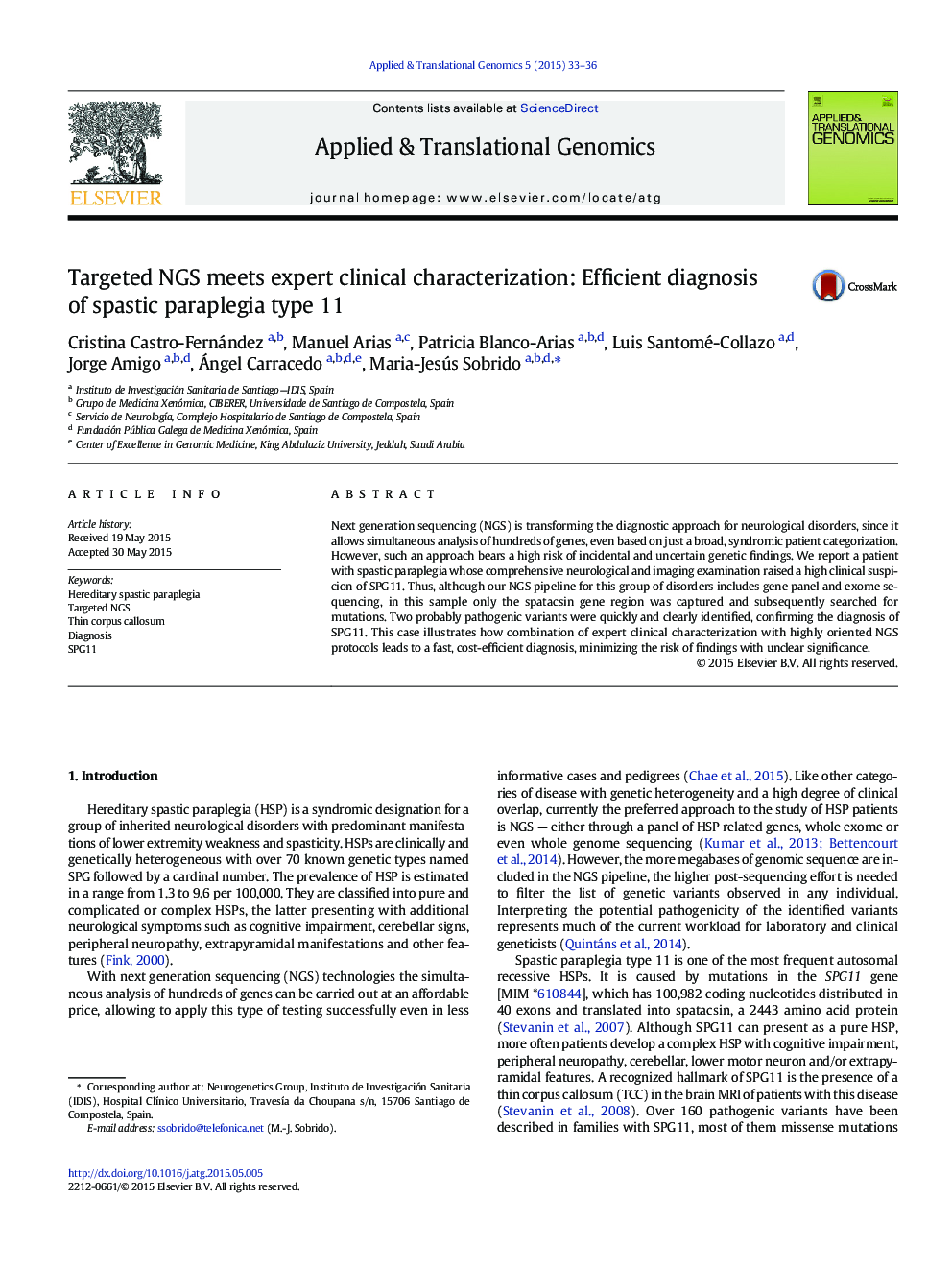| Article ID | Journal | Published Year | Pages | File Type |
|---|---|---|---|---|
| 2772930 | Applied & Translational Genomics | 2015 | 4 Pages |
Next generation sequencing (NGS) is transforming the diagnostic approach for neurological disorders, since it allows simultaneous analysis of hundreds of genes, even based on just a broad, syndromic patient categorization. However, such an approach bears a high risk of incidental and uncertain genetic findings. We report a patient with spastic paraplegia whose comprehensive neurological and imaging examination raised a high clinical suspicion of SPG11. Thus, although our NGS pipeline for this group of disorders includes gene panel and exome sequencing, in this sample only the spatacsin gene region was captured and subsequently searched for mutations. Two probably pathogenic variants were quickly and clearly identified, confirming the diagnosis of SPG11. This case illustrates how combination of expert clinical characterization with highly oriented NGS protocols leads to a fast, cost-efficient diagnosis, minimizing the risk of findings with unclear significance.
